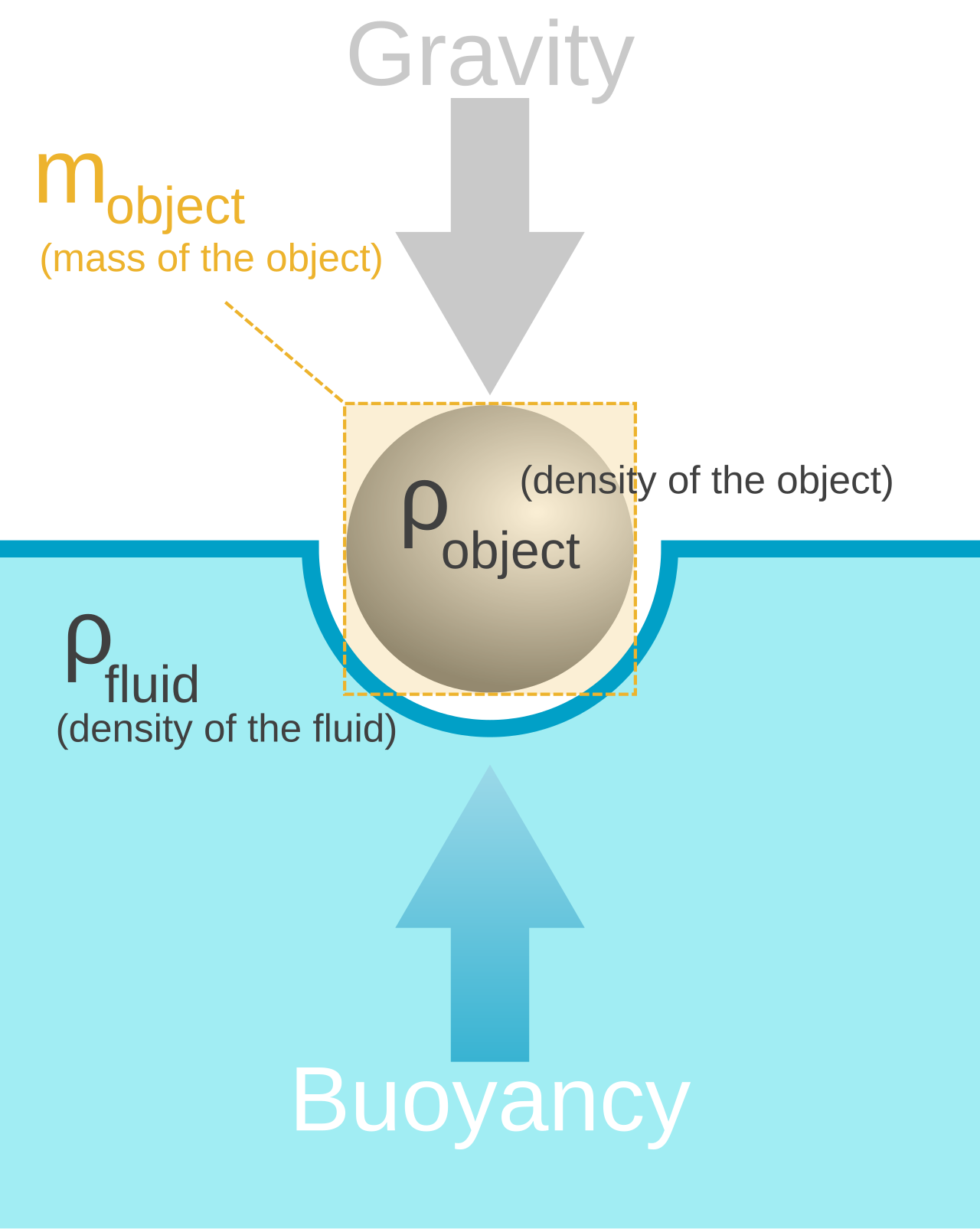Have you ever wondered why a giant metal ship can float effortlessly on the ocean, while a tiny coin sinks instantly? Or why a balloon rises into the sky, seemingly defying gravity, while a rock drops like a stone? The answer lies in a fascinating force called buoyancy—a principle that governs the floating, rising, and sinking of objects in fluids. It’s a concept we encounter every day, whether we’re bobbing in a swimming pool, watching a hot air balloon lift off, or simply observing how ice floats in a glass of water.
At first glance, buoyancy might seem like magic. But dig deeper, and you’ll find a rich, elegant explanation rooted in the fundamental laws of physics. Buoyancy not only helps us understand how ships stay afloat and why clouds form, but also reveals deep insights about fluid dynamics, pressure, density, and the invisible forces that shape our physical world. In this article, we’ll journey through the physics of floating—from ancient discoveries to modern-day marvels—unraveling the mystery behind why some things float and others sink.
The Ancient Discovery: Archimedes and the Crown
Our story begins over two thousand years ago in the bustling city of Syracuse, on the island of Sicily. There lived a mathematician and inventor named Archimedes, one of the greatest minds of the ancient world. Legend has it that Archimedes was tasked by the king to determine whether a new crown was made of pure gold, without damaging it. While pondering this problem, Archimedes stepped into a full bath and noticed the water rising as he submerged. Suddenly, it clicked. The volume of water displaced by his body could be used to determine the crown’s volume—and thus its density.
Overcome with excitement, Archimedes reportedly ran through the streets naked, shouting “Eureka!”—Greek for “I have found it!” This legendary moment led to what we now call Archimedes’ Principle, the foundation of buoyancy.
In essence, Archimedes’ Principle states:
An object submerged in a fluid experiences an upward force equal to the weight of the fluid it displaces.
This upward force is what we call buoyant force. If this force is greater than the object’s weight, the object floats. If it’s less, the object sinks. Simple, yet profound.
The Physics Behind Buoyancy: Pressure and Density
To truly grasp buoyancy, we need to look beneath the surface—literally. Fluids (like water and air) exert pressure in all directions. When you submerge an object in a fluid, the pressure on the bottom of the object is greater than the pressure on the top. This pressure difference creates an upward force: the buoyant force.
The strength of this force depends on two key factors: the volume of fluid displaced and the density of the fluid. The more fluid an object displaces, and the denser that fluid is, the stronger the buoyant force.
Consider a block submerged in water. Every bit of that water exerts pressure on the block’s surface. The pressure increases with depth, so the bottom of the block experiences more pressure than the top. This difference generates a net upward force—the buoyant force—that tries to push the block upward.
Whether the block actually rises, sinks, or remains suspended depends on its density, which is its mass divided by its volume. If the object is less dense than the fluid, the buoyant force will be greater than the object’s weight, and it will float. If it’s more dense, gravity wins, and it sinks.
Floating in Water: Everyday Buoyancy at Work
Let’s bring this concept back to the familiar. Picture yourself lying on your back in a pool. You’re floating, mostly relaxed, with parts of your body just beneath the surface. What’s happening here?
Your body displaces a certain volume of water. The water pushes back with an upward buoyant force. If you’re floating, that means the buoyant force equals your weight. Now, because the human body is composed of various materials—bone, fat, muscle, air—it has an average density close to that of water. That’s why you don’t immediately sink or shoot up to the surface. You find a balance point, called neutral buoyancy, where your weight equals the buoyant force.
Adding to the complexity, things like lung capacity, body composition, and salinity of the water can all influence buoyancy. Saltwater, for instance, is denser than freshwater, which is why it’s easier to float in the ocean than in a swimming pool.
Sinking Ships and Floating Giants: Buoyancy in Engineering
One of the most visually impressive applications of buoyancy is in ship design. A massive cargo ship may weigh hundreds of thousands of tons, yet it floats effortlessly. The trick lies in how the ship is built. It’s not a solid chunk of steel—it’s a hollow structure with huge air-filled compartments.
By spreading its mass over a large volume, the ship displaces a vast amount of water. The displaced water pushes back with a buoyant force equal to the ship’s weight. As long as the design ensures that the ship displaces enough water to balance its weight, it will float.
Submarines take this concept even further. By adjusting their buoyancy using ballast tanks, submarines can rise, sink, or hover underwater. When the tanks are filled with air, the sub becomes less dense and floats. When filled with water, it becomes denser and sinks. Engineers meticulously calculate and control buoyant forces to ensure stability, safety, and efficiency.
Balloons, Blimps, and Helium: Buoyancy in Air
Buoyancy isn’t limited to water—it works in air, too. The physics is identical, just with a less dense fluid. This explains how hot air balloons and helium blimps float in the sky.
Helium and hot air are both less dense than the surrounding atmosphere. When enclosed in a balloon, they displace a volume of air heavier than themselves, producing an upward buoyant force. As with floating in water, the balloon rises until the buoyant force equals the balloon’s weight, at which point it stabilizes in the air.
The idea of air acting like a fluid may seem strange, but air pressure and density changes explain many phenomena, from weather patterns to airplane flight. The density of air decreases with altitude, so the higher you go, the less buoyant force there is. This is why balloons can only ascend to a certain height before the surrounding air becomes too thin to support them.
Density: The Deciding Factor
If there’s one physical property at the heart of buoyancy, it’s density. Whether an object floats or sinks hinges on a simple comparison: Is the object denser than the fluid it’s in?
Ice floats in water because it is less dense than liquid water—a rare property among substances. This has profound implications for life on Earth. If ice sank, lakes and oceans would freeze from the bottom up, disrupting ecosystems. Instead, ice forms a floating insulation layer that helps retain warmth underneath.
Oil floats on water for the same reason: lower density. This difference is exploited in countless applications, from cooking to environmental cleanups. But in other contexts—like oil spills—it poses serious ecological challenges.
Understanding density isn’t just about predicting flotation. It helps explain convection currents in the atmosphere, ocean circulation, and even planetary formation. Buoyancy and density are woven into the very fabric of natural systems.
Neutral Buoyancy and the Art of Suspension
There’s a special case of buoyancy known as neutral buoyancy, where an object neither sinks nor floats but remains suspended in the fluid. This equilibrium occurs when the object’s density equals that of the fluid.
Scuba divers use this principle to move effortlessly through water. By adjusting their buoyancy with air-filled vests, divers can float at a constant depth without sinking or rising. Neutral buoyancy is also key to astronaut training, which often takes place in massive underwater environments that simulate the weightlessness of space.
Even aquatic animals master this balance. Fish use swim bladders to regulate buoyancy. By adjusting the gas levels in these internal sacs, they achieve neutral buoyancy and conserve energy while navigating the depths.
Negative and Positive Buoyancy: The Tug-of-War
We can now see that buoyancy operates in a balance between positive, negative, and neutral states.
An object experiences positive buoyancy when the buoyant force exceeds its weight—it floats or rises. Negative buoyancy occurs when the object is heavier than the displaced fluid—it sinks. In neutral buoyancy, these forces are equal, and the object stays suspended.
Understanding these states has vast implications. It’s crucial in submarine design, underwater exploration, aeronautics, meteorology, and space travel. It also plays a central role in sports like swimming and diving, where body position and movement affect how buoyancy interacts with hydrodynamic forces.
Buoyancy in Nature: From Lava Lamps to Stars
Buoyancy isn’t just a human-made phenomenon—it’s deeply embedded in nature. The lava lamp, for example, illustrates buoyancy beautifully. Inside the lamp, blobs of wax heat up, become less dense, and rise. At the top, they cool, become denser, and sink. This cycle continues, powered by buoyancy-driven convection.
In the Earth’s mantle, similar processes move molten rock, driving plate tectonics. In the atmosphere, warmer air rises due to lower density, creating wind, storms, and weather systems. In the ocean, warm and cold currents interact based on buoyancy differences, influencing global climate.
Even in the stars, buoyancy plays a role. In the sun’s interior, hot plasma rises and cools, creating convective zones that transport energy outward. Buoyancy affects how energy moves through stars and shapes the structure of galaxies.
Buoyancy and Human Exploration: Diving into the Deep
The mastery of buoyancy has allowed humanity to reach incredible depths. From the early diving bells of the Renaissance to today’s deep-sea submersibles, buoyancy enables us to explore the dark, high-pressure world beneath the ocean.
Modern submarines are engineering marvels, balancing massive weight with precisely calculated buoyant forces. They rely on sensors, computers, and trained operators to adjust ballast and maintain control. The challenge grows as they dive deeper, where water pressure increases dramatically and the margin for error shrinks.
Yet buoyancy also enables life at these depths. Deep-sea creatures have evolved gas-filled organs, specialized bodies, and unique adaptations to navigate extreme environments. Their mastery of buoyancy is not mechanical but biological—nature’s engineering at its finest.
Final Reflections: The Silent Force That Lifts the World
Buoyancy is more than just a curious force that makes things float. It’s a fundamental aspect of physics that reveals the balance of forces, the nature of fluids, and the elegance of physical laws. It’s the reason we can sail the seas, soar through the skies, and plumb the depths of the oceans. It governs how planets form, how weather moves, and how life thrives in water and air.
In a world where gravity constantly pulls us downward, buoyancy offers a gentle upward push. It reminds us that in physics—as in life—balance is everything. When forces are aligned, motion becomes graceful, efficient, and even beautiful.
So the next time you watch a duck glide across a pond, see a helium balloon drift into the sky, or float in a warm summer pool, remember: you’re witnessing the invisible hand of buoyancy at work, a silent architect behind the world’s great dances of motion and stillness.






